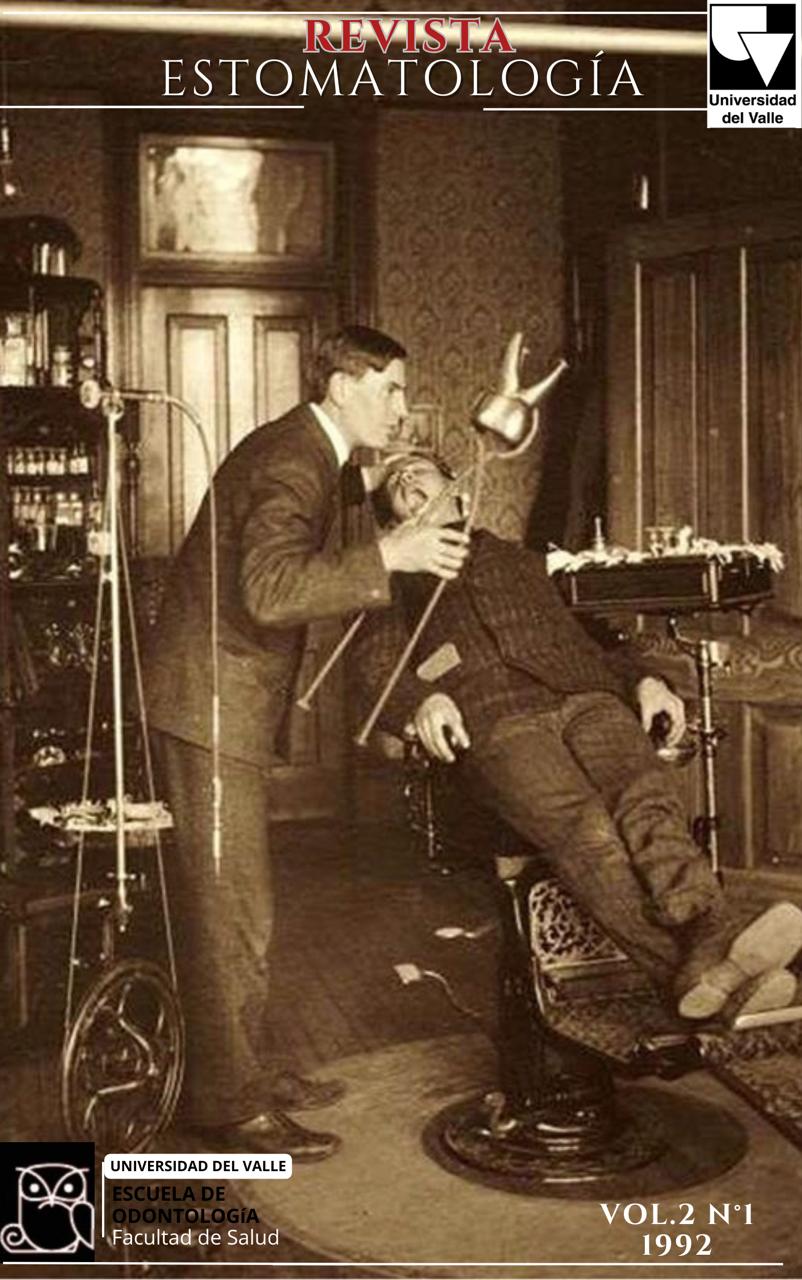Disfunción temporomandibular en escolares
Main Article Content
Most authors in occlusion avoid to mention TM disfunction. This paper shows the results of a study done amon 400 students at Cali Colombia during thr first semester of 1987. 213 boys and 187 girls were examined by one operatoro Signs and symptoms of TM disfunction were arranged according to sex and age. Mean age was 8.6 years. Childs were divided into groups according to age (7-14)
The most consisting findings were:
Evidence of pre-auricular pain: 1,25%
Concient articular noises: 6.93%
Opening limitation 1.25%
Bruxism during night 9.8%
Bruxism during day 7.33%
Unilateral chewing 35%
Pain during posteriorpalpation 37.25%
Mean opening L 1.8 mm
This findings are not necessarily consistent with TM Disfunction but they classified according to their incidence as predisponsin factors. Opening and clusure patterns were also reviewed and according to some authors the are suggestive of mandibular disorders. Another factor reviewed was vertical and horizontal overbite specially concerning "anterior protection". As happens with adults only the presence of pain awares the patient of his problem. More reasearc must be done in this field.
Downloads

This work is licensed under a Creative Commons Attribution-NonCommercial-NoDerivatives 4.0 International License.
Los autores/as conservan los derechos de autor y ceden a la revista el derecho de la primera publicación, con el trabajo registrado con la licencia de atribución de Creative Commons, que permite a terceros utilizar lo publicado siempre que mencionen la autoría del trabajo y a la primera publicación en esta revista.

